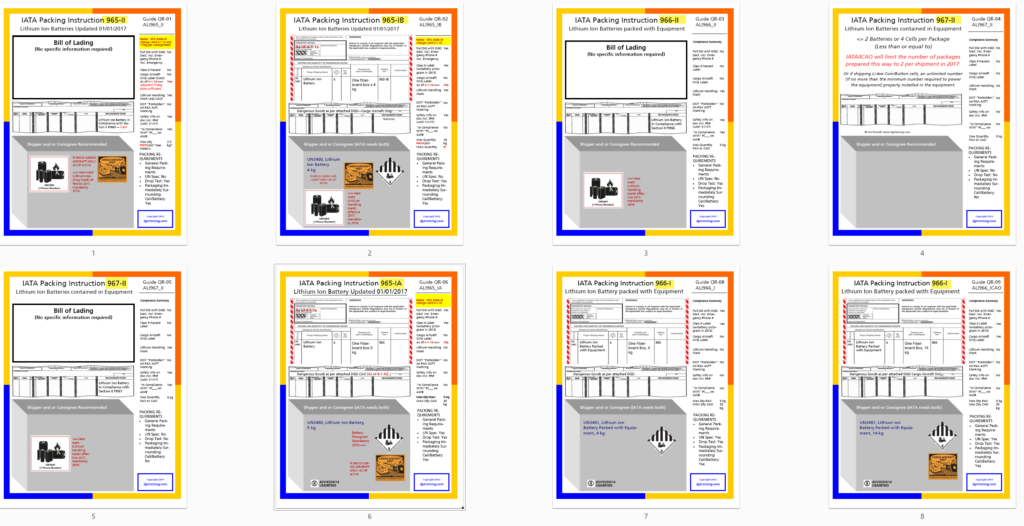
There’s no free lunch
Good news and bad news about shipping lithium batteries.
There’s good news and bad news about Dangerous Goods training for shipping lithium batteries. First, the good news: it can be relatively easy to learn how to ship one single kind of lithium battery in one single configuration that never changes by one single mode of transport, in one single type of packaging, to one single destination using one single carrier that never changes their mind about their rules.
Easy. Piece of cake.
For example, all you ship are iPads. The battery can’t be shipped loose; it’s always installed. And you only ship by one mode of transport. That training can probably be done in an hour or so. Every single package has the lithium battery handling mark on it, and that’s about it once you’ve ensured that it’s properly packaged.
Now for the bad news. Here are ten (10) factors that complicate lithium battery shipping for the average shipper or carrier:
- More than one type of lithium battery (Lithium Ion or Lithium Metal or both)
- More than one power level (i.e. over 20 Wh per cell or 100 Wh per battery, or less than that) for lithium ion batteries
- More than one quantity of batteries in different types of packaging ( i.e. one box may have 2 batteries, another might have 3.)
- More than one quantity of lithium content (i.e. over 1 g per cell or 2 g per battery, or less than that) for lithium metal batteries
- More than one mode of transport (air/ground/ocean)
- By more than one carrier
- To more than one country
- In more than one configuration (i.e. sometimes loose, sometimes, packed in the same box as the equipment it powers, or sometimes installed in the equipment it powers.)
- Sometimes there are spare batteries.
- Sometimes you must return a damaged battery or ship a prototype.
As trainers we have spent YEARS following the ever-changing rules and updating our training content. Things are simpler now than they were ten years ago, however, there are still over 50 possible shipment configurations you could experience in preparing a shipment.
We have documented every one of these using our online Lithium Battery Wizard. There are about sixty (60) different endpoints of a shipment configuration that includes:
- Package Marking or Labeling
- DG Documentation
- Bill of Lading Documentation
Here’s a snapshot of eight of them from the Lithium Battery Wizard:

So, with 60 possible outcomes how likely is it you could absorb all the training necessary in, say 90 minutes? Highly doubtful. You’d have to know how to look up the rules in the appropriate regulations, how to apply them (and when not to) and furthermore you’d have several thousand pages of regulations to study if you covered the three main modes of transport (air/ground/ocean).
Yet the reality is that some online training vendors are offering “Lithium Battery Training Certification” in 90 minutes or less. Impossible. You cannot do a thorough job of presenting all the likely scenarios in that amount of time. Of the 3,000 people who’ve taken our online lithium battery training, the average amount of time to complete the full multimodal program is about 14 hours (or the equivalent of 2 days in the classroom).
So, before you sign up for that “quick” training program online, make sure that it meets your needs. And of course, feel free to call us about any questions you have about our lithium battery training classes, online or with a live instructor.
